Tinnitus Does Not Interfere with Auditory and Speech Perception
- PMID: 32554549
- PMCID: PMC7392513
- DOI: 10.1523/JNEUROSCI.0396-20.2020
Tinnitus Does Not Interfere with Auditory and Speech Perception
Abstract
Tinnitus is a sound heard by 15% of the general population in the absence of any external sound. Because external sounds can sometimes mask tinnitus, tinnitus is assumed to affect the perception of external sounds, leading to hypotheses such as "tinnitus filling in the temporal gap" in animal models and "tinnitus inducing hearing difficulty" in human subjects. Here we compared performance in temporal, spectral, intensive, masking and speech-in-noise perception tasks between 45 human listeners with chronic tinnitus (18 females and 27 males with a range of ages and degrees of hearing loss) and 27 young, normal-hearing listeners without tinnitus (11 females and 16 males). After controlling for age, hearing loss, and stimulus variables, we discovered that, contradictory to the widely held assumption, tinnitus does not interfere with the perception of external sounds in 32 of the 36 measures. We interpret the present result to reflect a bottom-up pathway for the external sound and a separate top-down pathway for tinnitus. We propose that these two perceptual pathways can be independently modulated by attention, which leads to the asymmetrical interaction between external and internal sounds, and several other puzzling tinnitus phenomena such as discrepancy in loudness between tinnitus rating and matching. The present results suggest not only a need for new theories involving attention and central noise in animal tinnitus models but also a shift in focus from treating tinnitus to managing its comorbid conditions when addressing complaints about hearing difficulty in individuals with tinnitus.SIGNIFICANCE STATEMENT Tinnitus, or ringing in the ears, is a neurologic disorder that affects 15% of the general population. Here we discovered an asymmetrical relationship between tinnitus and external sounds: although external sounds have been widely used to cover up tinnitus, tinnitus does not impair, and sometimes even improves, the perception of external sounds. This counterintuitive discovery contradicts the general belief held by scientists, clinicians, and even individuals with tinnitus themselves, who often report hearing difficulty, especially in noise. We attribute the counterintuitive discovery to two independent pathways: the bottom-up perception of external sounds and the top-down perception of tinnitus. Clinically, the present work suggests a shift in focus from treating tinnitus itself to treating its comorbid conditions and secondary effects.
Keywords: animal model; attention; auditory perception; neural noise; speech recognition; tinnitus.
Copyright © 2020 the authors.
Figures
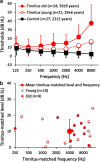

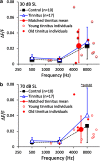
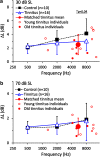

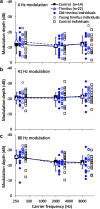

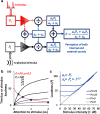
Comment in
-
An Auditory Phantom Percept That Does Not Impair External Sound Perception.J Neurosci. 2021 Feb 24;41(8):1622-1624. doi: 10.1523/JNEUROSCI.2528-20.2020. J Neurosci. 2021. PMID: 33627482 Free PMC article. No abstract available.
References
Publication types
MeSH terms
Grants and funding
LinkOut - more resources
Full Text Sources
Medical
Miscellaneous
